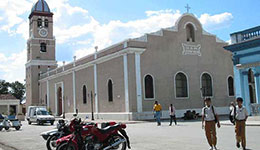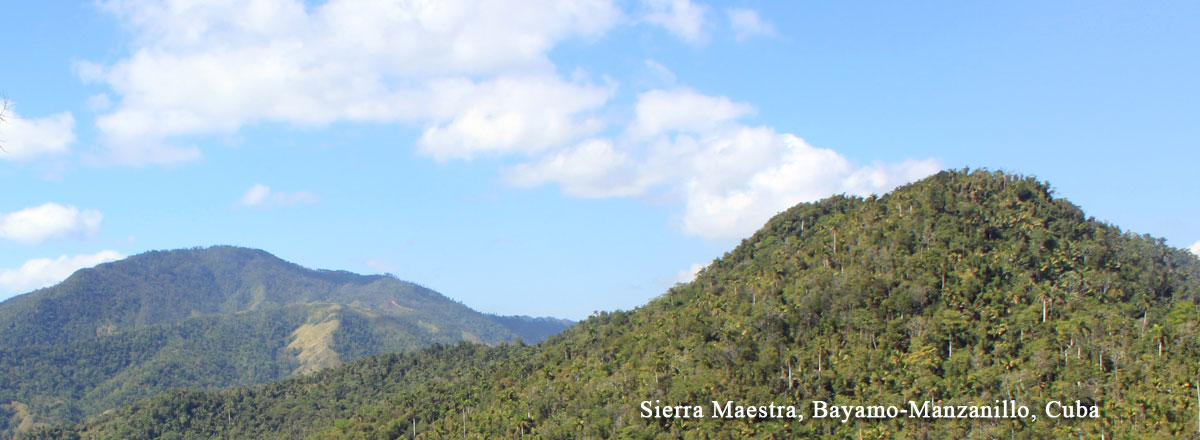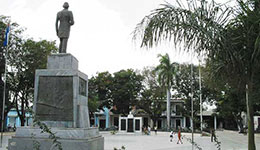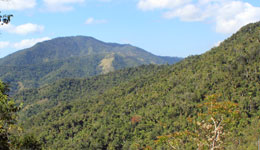Bayamo was the second of the seven Villas established in Cuba by Diego Velasquez and was founded in 1513. This was the city where two of Cuba’s main historic events were held: First, after the beginning of the Ten Years War, on October 10th, 1868 and after Bayamo was proclaimed capital of the Republic in Arms, exactly on October 20th, 1868, the Cuban National Anthem was song for the first time. The second important event was the burning of the city by its residents before the imminent control of the city by the Spaniards on January 12th, 1869. These and other important events in the history of the island turned this city into the “Birthplace of Cuban Nationality”.
The colonial urbanization of the city marked by its historic center is made up by narrow streets, large homes, plazas, parks and an old cathedral. Among some of the most interested places are the Birthplace of Carlos Manuel de Cespedes, “Father of the Homeland”; the San Salvador de Bayamo Parochial Church which maintains its Dolores Chapel (1740) open, whose Baroque alter piece is among the most beautiful in the country.
There are also the Hymn and Revolution Plazas (Squares), the Ventana of Luz Vazquez, the House of Cuban Nationality and the recently refurbished boulevard in the historic centre. One of the most attractive traditions in the city of Bayamo are its horse carriages in which a visitor can travel along its narrow streets and enjoy some of its constructions and most important plazas (squares).
The Desembarco del Granma National Park has 8 Surrounded by the Sierra Maestra Mountains in eastern Cuba, you can find the province of Granma with a rich natural, historic and cultural heritage. The province’s capital city is Bayamo, and you can reach the city by the Central Road (Carretera Central) or main highway through northern Holguin or from the east from Santiago de Cuba. The city of Bayamo is known as the “National Monument City” due to its important participation in the country’s’ history.
Between the ocean and the Mountains and with a spectacular scene, you will find Marea del Portillo, an attractive area where you can find 17 snorkeling sites, the most attractive region is found in Cabo Cruz, although in order to fully enjoy them you should walk through the paths which will take you to the waterfalls from the Cilantro and Las Yaguas Rivers; you can also prepare an excursion to Cayo Blanco, a small islet located only 500 meters from the beach. For those of you that prefer something much more intimate and private in these remote areas, here you an enjoy lodging with great services and efficient comfort.
In the surrounding areas of the town of Guisa, you can enjoy the Cupaynicú Botanical Gardens; in the Jiguaní-San German Road you can find the Dos Rios Monument where Cuba´s National Hero Jose Marti fell in combat in 1895. The ruins of the La Demajagua Sugar Plantation stands right before reaching Manzanillo, second most important city in the province of Granma. Manzanillo is a coastal city bathed by the waters of the Guacanayabo Gulf surrounded by stories of pirates. The cities of Bayamo and Manzanillo have airports which welcome national and international flights. Bayamo is an excellent option for those that prefer something different, natural, historic and traditional.
Things to do
Attractions
- ✓ San Salvador Parroquial and Nuestra Señora de los Dolores Alter, Bayamo.
- ✓ Hymn Plaza Arquitectural.
- ✓ Jose Joaquin Palma Theater, Bayamo.
- ✓ Summerhouse of the Céspedes de Manzanillo Park, Manzanillo.
- ✓ Cupaynicu Botanical Garden, Guisa.
- ✓ The House of the Farero and the Cabo Cruz Lighthouse, Niquero.
- ✓ La Demajagua Memorial, Manzanillo-Niquero km 3 Road.
- ✓ Carlos Manuel de Cespedes Park, Manzanillo.
- ✓ Desembarco del Granma National Park, Sierra Maestra.
Attractions
- ✓ San Juan Plaza (Square)
- ✓ Former Pilar de Jucaibama Sugar Plantation, Mabay Road, kilometer 4.
- ✓ Home of Don Tomas Estrada Palma.
- ✓ Provincial Museum of Bayamo.
- ✓ House of Cuban Nationality in Bayamo.
- ✓ Carlos Manuel de Cespedes Park-Revolution Plaza, Bayamo.
- ✓ Birthplace of Father of the Homeland, Carlos M. de Céspedes, Bayamo.
- ✓ Manzanillo Theater, Manzanillo.
- ✓ Wax Museum
- ✓ Paseo Bayames
Casa de la Trova in Bayamo.
Building of great architectural value dating from the late eighteenth and early nineteenth century, was one of the buildings that survived the fire of the city and currently retains its ceilings and walls, faithful exponents of bayamesa architecture, is located in the street Antonio Maceo # 111 between Martí and Donato Marmol

San Salvador de Bayamo Church

San Salvador de Bayamo church was built in 1516 and declared a cathedral in the twentieth century. Next to the church is the Chapel of Our Lady of Sorrows dating from 1720. It is located in the historic city center Monument City, specifically to one side of the Plaza del Anthem. During the glorious fire of January 12, 1869 were destroyed the nave and the main chapel, leaving intact the Capilla de los Dolores.




